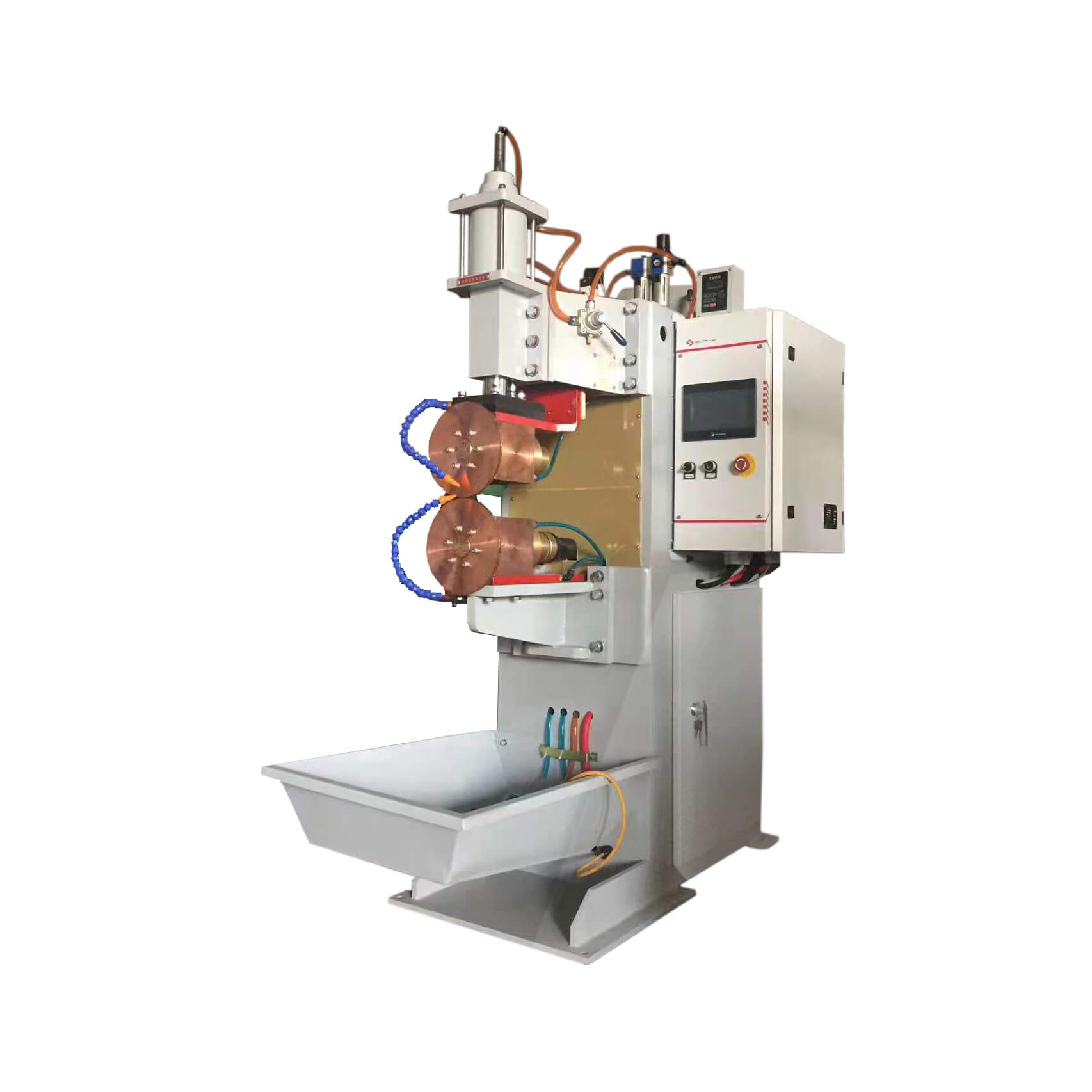A Seam Welding Machine is a specialized resistance welding device designed to create continuous, airtight weld seams by joining overlapping metal sheets or components. It is widely used in industrial manufacturing for producing leak-proof joints, playing a critical role in sectors like automotive, aerospace, and container production.
Working Principle
Operating on resistance welding principles, it uses rotating electrode wheels to apply pressure and electric current. As the electrodes rotate, intermittent or continuous current passes through the metal, generating heat that melts the contact surfaces. The overlapping metals fuse together, forming a continuous weld seam as the workpiece moves through the machine. This process ensures uniform bonding without additional fillers.
Structure and Components
Key components include a welding transformer, electrode wheels, pressure mechanism, drive system, control panel, and cooling unit. The transformer supplies welding current, while electrode wheels (usually copper alloy) conduct electricity and apply pressure. The drive system controls workpiece movement speed, and the control panel adjusts parameters like current, pressure, and welding time. The cooling system prevents overheating during operation.
Types
Major types include continuous seam welders (constant current) and intermittent seam welders (pulsed current). Based on electrode configuration, there are roll-type, rotary, and linear models. Some specialized versions include mash seam welders for thin materials and projection seam welders for specific joint designs.
Advantages
It produces high-integrity, leak-proof seams ideal for pressure vessels and fuel tanks. The automated process ensures consistent weld quality with minimal human error. It offers high production efficiency for mass manufacturing. Compared to other welding methods, it reduces material distortion and requires no filler materials, lowering production costs.
Applications
In automotive manufacturing, it welds fuel tanks, exhaust systems, and body panels. It is essential for producing food and beverage cans, pressure vessels, and heat exchangers. In aerospace, it joins aircraft fuel lines and hydraulic components. It also finds use in manufacturing metal containers and electrical enclosures.
Development Trend
Modern seam welders integrate digital controls and sensors for precise parameter adjustment. Intelligent models feature real-time monitoring, automatic defect detection, and programmable welding sequences. Energy-efficient designs and eco-friendly cooling systems are becoming standard, aligning with sustainable manufacturing practices. Advanced electrode materials improve durability and weld quality.


